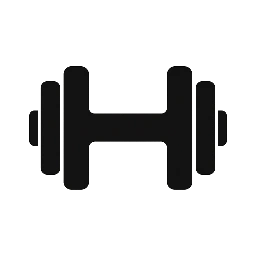When it comes to getting in shape, most people ask the wrong question: “Should I do cardio first or lift weights first?”. The answer is the best results come when you combine cardio and weightlifting. Whether you’re aiming for fat loss or muscle gain, understanding how to integrate both can help you train smarter and reach your goals faster.
In this article, we’ll cover:
- What strength training is and why it matters
- The benefits of cardio and what type to do
- Why combining cardio and strength training works so well
- How to structure your workouts for maximum results
What is Strength Training and Why It Matters
Strength training, also known as resistance training involves using external or bodyweight resistance to challenge your muscle. Exercise like squats, deadlifts, bench press, and back rows all fall into a category of weightlifting. While many people think of strength training purely for building muscle, it benefits go much deeper.
Lifting weights increases lean muscle mass, which boost your resting metabolism. That means your body burns more calorie even while rest. It also strengths bones, reduce injury risk, improves posture, and enhances mental clarity. Unlike cardio, which burns calories primarily during exercise, weight training creates an “afterburn effect” that continues to torch calories long after your workout ends.
On the mental health side, resistance training has been linked to reduced symptoms of anxiety and depression, increased confidence, and better sleep. In short, it’s a powerful tool not just for sculpting your body, but for improving your overall quality of life.
The Benefits of Cardio and the Best Types to Pair with Strength Training
Cardio is any form of exercise that raises your heart rate and keeps it elevated for a sustained period. This includes walking, jogging, cycling, swimming, and rowing. The benefits of cardio are extensive: improving cardiovascular health, greater endurance, enhanced circulation, and better energy regulation.
When combined with strength training, cardio helps increase caloric burn, supports heart health, and aids in recovery by increasing blood flow to tired muscles. That said, the type and timing of your cardio is key especially if your goal is to preserve muscle and burn fat.
The best type of cardio to pair with cardio and weight training include:
- Walking or incline treadmill walking for fat loss without added fatigue
- Stationary cycling for low-impact endurance work
- Rowing or elliptical for full-body movement without high joint stress
Doing cardio after weight lifting ensures that your energy is spent on your strength session first—where good form and power are most critical. Cardio afterward taps into fat stores more effectively, making this ideal for those focused on fat loss.
How to Get the Best Results from Cardio and Weightlifting
If your goal is to lose weight, tone up, or simply feel stronger, the way you structure your workouts matters. Here’s how to get the most from combining cardio and lifting:
Start with your weight training routine when your muscles are fresh. This allows you to lift with proper form and intensity, stimulating strength and muscle growth. Follow up with 20–30 minutes of moderate-intensity cardio, such as incline walking or cycling, to continue burning calories without compromising recovery.
Space your workouts properly throughout the week. A good split might look like this:
- 3–4 days of strength training (upper/lower or full-body splits)
- 2–3 days of moderate cardio, either post-lifting or on rest days
- 1 day of complete rest or light movement, like stretching or walking
Recovery is just as important as training. Without it, your body won’t build muscle or adapt. Eat enough protein, stay hydrated, and aim for 7 to 9 hours of sleep to support your progress.
Take Away
Instead of asking whether to choose cardio or weight training, start asking how you can combine them for the best results. When used together, they build a body that’s strong, healthy, and built to last.
So next time you’re in the gym, remember: it’s not weight training vs cardio it’s both, in the right order and balance.



